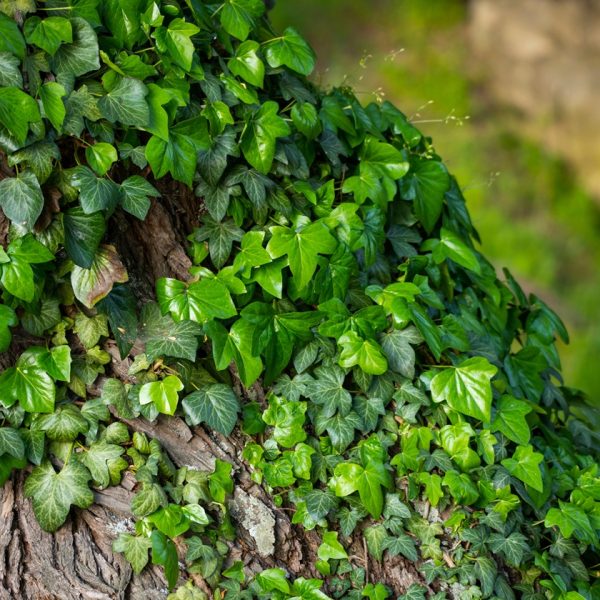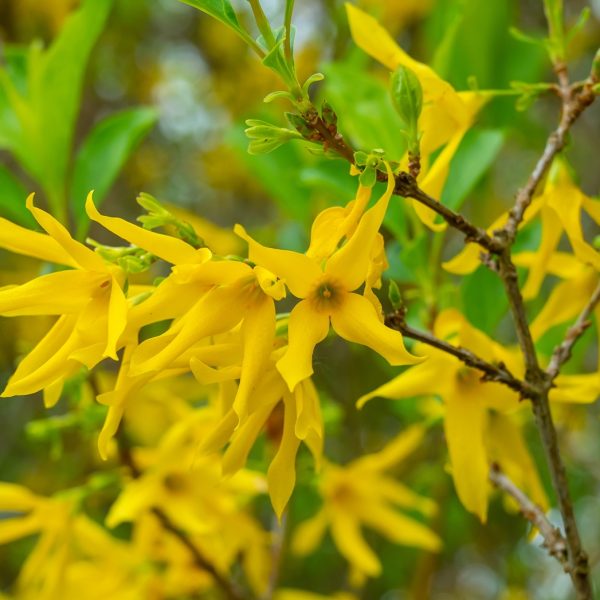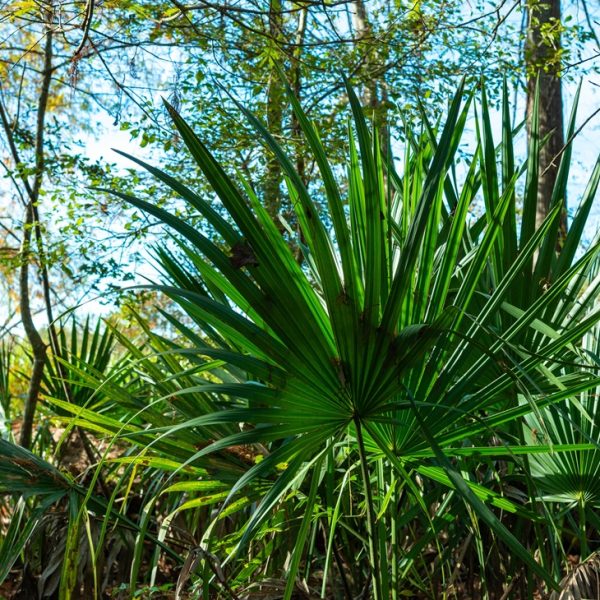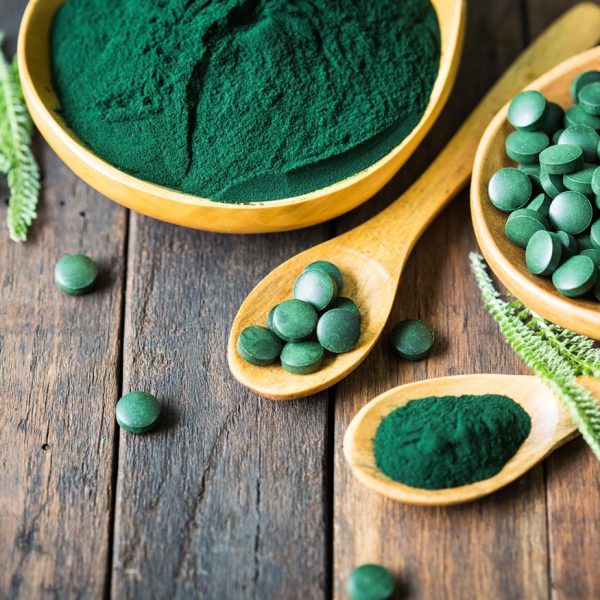-
How does it feel?
Blue cohosh is a bitter woodland plant that shares a genus with barberry, goldenseal, and Oregon grape root. It has a less pungent and acrid taste profile than that these related species. The tincture and decoction also have slight sweet taste.
-
What can I use it for?

Blue cohosh (Caulophyllum thalictroides) Historically, blue cohosh well esteemed by herbalists and midwives for helping to support the uterine function during late pregnancy and labour. There is some controversy surrounding the safety of this herb due to a small number of case reports relating to foetal distress and toxicity (2). Therefore, it is not recommended for use during pregnancy unless under the care and guidance of a qualified medical herbalist (3).
Blue cohosh is an important Native American medicine used for a range of female reproductive conditions. It has a notable tonic effect upon the uterine tissues. It can be used for dysmenorrhoea (menstrual pain) particularly where it is caused by poor uterine tone. It is sometimes used for young women at the commencement of menstrual cycle to help bring about healthy and regular cycles (4).
Blue cohosh is used for conditions of the musculoskeletal system. It has anti-rheumatic and anti-inflammatory actions, which may be applied for spasmodic muscular and rheumatic pains as well as for rheumatism in the small joints of the hands and feet (2). It also has muscular relaxant properties, which may be useful for muscle tension and cramps (1,2).
Due to its relaxant effect on smooth muscle, blue cohosh may relieve bronchial spasms associated with bronchitis, asthma and whooping cough (4). Its specific activities make it a choice herb for colds and flus that are characterised by congestion, coldness, aching joints and a fever (2).
-
Into the heart of blue cohosh

Blue cohosh (Caulophyllum thalictroides) Blue cohosh is sweet, acrid, bitter and pungent in taste. It is considered to be warm and dry energetically with restorative and decongesting qualities. It also has a moderating effect on the tissues due to its ability to relax and stimulate the smooth muscles (2).
It primarily acts upon the female reproductive system and is best applied where there is uterine atony or vascular constriction and tension which results in congestion. It is a relaxing remedy which may be useful for other conditions classified by tension and constriction in the body, particularly muscular tension (1,4).
It promotes perspiration and dispels wind-cold, which may be identified by coldness in the extremities, aches and pains in the joints. Blue cohosh can also be considered as a systemic nervous relaxant that helps to address both smooth and striated muscular pain and spasm in cases of nervous tension and high neuromuscular tone (2).
Although blue cohosh is not a traditional Chinese herb, in the principles of traditional Chinese medicine it is believed to activate qi (relating to vital energy or life force that is thought to guide physical, spiritual and mental processes), release constraint and relax nervous tension and irritability. It is specific for nervous deficiency that presents with emotional and physical tensions. It modifies the tensions in the musculoskeletal system, reducing inflammation and spasm. It is considered to have both relaxant and stimulating qualities. As a stimulant it may be used to address weak and cold tissue conditions. As a relaxant it may apply to both tension and constriction (2).
-
Traditional uses

Blue cohosh (Caulophyllum thalictroides) Blue cohosh was an important remedy for gynaecological, obstetric and neuromuscular conditions used by native American tribes from where this plant’s use originates (2). The eclectic and physiomedical physicians of the nineteenth century adopted the use of blue cohosh due to its reputed effectiveness.
It was recommended only in small doses as a uterine tonic during the last five weeks of pregnancy. An eclectic physician, John William Fyfe wrote that “as a measure preparatory to confinement [delivery], this agent, when used for two or three weeks previous to labor is of much service to the childbearing woman. It so acts upon that part of the nervous system which control the uterus and pelvic region that there is perfect coordination of muscular powers or contractions. Through this kindly action blue cohosh becomes an efficient remedy for atonic or irritable false pains, and release or cures many manifestations of uterine irritation (4)”.
One of the most notable obstetric writers of the early 20th century, Finley Ellingwood described blue cohosh as a tonic. His understanding of blue cohosh was that it should be used in the last weeks of pregnancy to prolong gestation until the foetus is fully developed, preventing labour until the uterus reaches superior tonicity (4).
-
Traditional actions
Herbal actions describe therapeutic changes that occur in the body in response to taking a herb. These actions are used to express how a herb physiologically influences cells, tissues, organs or systems. Clinical observations are traditionally what have defined these actions: an increase in urine output, diuretic; improved wound healing, vulnerary; or a reduction in fever, antipyretic. These descriptors too have become a means to group herbs by their effects on the body — herbs with a nervine action have become the nervines, herbs with a bitter action are the bitters. Recognising herbs as members of these groups provides a preliminary familiarity with their mechanisms from which to then develop an understanding of their affinities and nuance and discern their clinical significance.
-
Traditional energetic actions
Herbal energetics are the descriptions Herbalists have given to plants, mushrooms, lichens, foods, and some minerals based on the direct experience of how they taste, feel, and work in the body. All traditional health systems use these principles to explain how the environment we live in and absorb, impacts our health. Find out more about traditional energetic actions in our article “An introduction to herbal energetics“.
Chinese energetics
Western energetics
-
What practitioners say

Blue cohosh (Caulophyllum thalictroides) Reproductive system
Blue cohosh has a long history of use in gynaecology and obstetrics. It was once a primary herb for augmenting the labour of childbirth. This effect is understood to result for a tonic effect upon the uterine tissues. Whilst much of the herbal literature is focused on its use as a partus preparator, it is important to note that there is some controversy around its use in pregnancy due to a small number of case reports which suggest a potential for foetal adverse reactions (see Safety) (1).
The American Herbal Pharmacopeia states that “concerns based on case reports and mechanistic data about its potential foetal toxicity have caused blue cohosh to fall into disuse, thus potentially eliminating a once very important herb from the materia medica” (1). Matthew Wood also elucidates on the heart-stimulating effects of blue cohosh, suggesting that these effects may be over-stimulating or even damaging to the baby’s heart (4).
Some herbalists still work with blue cohosh to encourage normal and efficient labour in specific circumstances. However, with the lack of conclusive literature surrounding safety, it is important that this herb is only used in the correct dose and timeframe and under supervision of a qualified herbalist (4). Most of the modern literature suggests that it should only be used during the last weeks of pregnancy and in low (drop) doses to help prepare the uterus for birth (2,4).
Mathew Wood suggests that it should only be used in drop doses (1–7 drops) over a period of time rather than large doses in the final hours (4). It works by increasing the rate of contractions (1,5) in the presence of tissue weakness (4) or poor uterine tone (2,6). It is also sometimes used where labour is slow to start, where the os (opening of the uterus) is rigid or where contractions are weak and feeble (4).
It contains an alkaloid called methylcytisine, which is believed to act as a stimulant on the uterus, increasing the rate of contractions during childbirth. In contrast, it also has a traditional use for miscarriage prevention (5,7) in combination with black haw (Viburnum prunifolium) (3); however, this is only relevant to the last two months of pregnancy (4) and it should be noted that some of the literature advises against its use for miscarriage prevention (2). This is another matter that is best managed under the care of a practitioner. It is sometimes also used to assist in the passing of the placenta (6).
American herbalists suggest that the effects of blue cohosh can have considerably different effects on different women. Perhaps this is a prime example of the importance in herbal prescribing that focuses on the individual circumstances, constitutions and tissue states that are being specifically targeted as opposed to treating the symptom or condition (2,6).
The best application of this herb relates to congestion and tension or heaviness in the tissues where there is poor venous circulation. Such cases may present with pain, discomfort and a heavy or full sensation in the pelvic region (6).
Blue cohosh is useful for cervicitis with congestion and poor blood movement within the reproductive organs (6). It is an emmenagogue (a herb that stimulates or increases menstrual flow). It is commonly used to address amenorrhoea, dysmenorrhoea and other conditions associated with uterine atony or congestion. It is sometimes used in combination with false unicorn, motherwort and yarrow where these conditions are caused by weakness in the uterine tissues (7). It is specific for dysmenorrhoea and endometriosis, where there is congestion and prolonged menstrual cycles of more than 30 days (6).
Blue cohosh is believed to have a hormone balancing action via correction of the hypothalamic feedback loop. This is one of the mechanisms by which is may assist in functional secondary amenorrhoea (8).

Blue cohosh (Caulophyllum thalictroides) Some herbalists use blue cohosh to help enhance or restore fertility due to its effects upon the hypothalamic feedback loop with reproductive hormones. Blue cohosh may be corrective where there is luteal malfunction associated with latent of frank hyperprolactinaemia. It may, in this case be used in combination with agnus castus and false unicorn (8).
It is sometimes used to assist in in fertility issues in older women with speculations that it has oestrogenic activities. This idea is supported by a correlating reaction that some women experience in using blue cohosh — ovulatory pain and spotting. Spotting and bleeding during ovulation is often experienced by women with high oestrogen or where there is an intolerance to oestrogen (4). The speculation that blue cohosh has oestrogenic activities is likely connected to its physiologically toning effect upon the reproductive system as a whole, which improves the functionality of the ovaries in producing oestrogen. It may, therefore, be of benefit in cases of oestrogen deficiency (2).
Furthermore, blue cohosh has anti-inflammatory and analgesic activities, which may be useful in the relief of pain caused by endometriosis, fibroids, polycystic ovaries and menopausal discomforts (9).
Musculoskeletal system
Blue cohosh is used for debilitated conditions of the musculoskeletal system such as rheumatism and idiopathic joint pain (10). It is specific for spasmodic muscular and rheumatic pains, impaired muscular power and for rheumatism of the small joints in the hands and feet (4).
Due to the contents of resins, saponins and volatile oils, blue cohosh also exerts a detoxicant action which may contribute to its effects in addressing chronic rheumatic conditions. It encourages the elimination of metabolic waste from the body through diaphoresis and diuresis. These actions can contribute in a somewhat secondary manner to addressing the inflammation and toxicity often associated with musculoskeletal conditions, whilst also having a direct anti-inflammatory and decongestant effect (2).
-
Research

Blue cohosh (Caulophyllum thalictroides) Despite the importance and long standing use of blue cohosh, very little scientific research has been carried out to explore its traditional uses. There are currently no clinical trials, although a small number of in vitro studies that focus on a number of its compounds demonstrate some of its medicinal activities. A small number of these studies have been included below to demonstrate the mechanism of action for some of the medicinal actions of blue cohosh discussed in this monograph.
Animal studies are not condoned by Herbal Reality, however, for the purpose of including research from which some understanding of therapeutic actions can be evidencec, some animal studies may be referenced within the works included herein.
Anti-inflammatory effect of triterpene saponins isolated from blue cohosh (Caulophyllum thalictroides)
An in vitro study was carried out explore the effects of compounds in blue cohosh on the suppressive expression of iNOS or proinflammatory cytokines. The study methodology used activated microglia with lipopolysaccharide and a number of constituents isolated from blue cohosh. The treatment demonstrated effective suppression of pro-inflammatory processes. The study also demonstrated similar effects in the adrenal glands of mice. The findings suggest that blue cohosh may be able to inhibit the expression of iNOS and proinflammatory cytokines (11).
Triterpene glycosides from the underground parts of Caulophyllum thalictroides
Another study, which set out to investigate the therapeutic activities of triterpene glycosides in blue cohosh, identified an enhancing effect on oestradiol binding to oestrogen receptors in vitro. A number of active oxytocic compounds were identified and in vitro findings suggest that this demonstrates a positive connection between blue cohosh’s traditional use for increasing uterine tone (12).
These works afford us a deeper insight into the medicinal activities of this fascinating plant and show it has significant potential beyond many of its current uses.
-
Did you know?
The genus name comes from the Greek words kaulos meaning a stem and phyllon meaning a leaf. The common name cohosh means ‘roughly hairy’ (6).
Additional information
-
Botanical description
Blue cohosh is a perennial plant which grows 1–3′ tall on strong, upright stems. It has a beautiful and unique foliage which is lacy, alternately-compound, blue-green in colour. The leaves grow from the mid-stem, emerging a smoky blue colour in spring and turning bluish-green as they mature. Young plants are covered with a whitish, waxy bloom. It produces inconspicuous, brownish-green to yellowish-green flowers in spring that are around 1/2″ in diameter. Each flower has six pointed sepals. Flowers later turn into its erect clusters of blue, fruit-like seeds. The outer seed coating turns fleshy and blue as seeds matures). These resemble small grapes or blueberries. The berry-like seeds are poisonous (17).
-
Common names
- Squaw root
- Blueberry root
- Blue ginseng
- Azurbär
- Papoose root
Many traditional herbal texts indicate that Caulophyllum giganteum and C. thalictroides have been used interchangeably throughout the history of the use of the herb. The American Herbal Pharmacopeia acknowledges that there are morphological differences. However, the chemistry appears to be identical (1).
-
Safety
Blue cohosh should also only be used under the care of a qualified medical herbalist for any conditions relating to conception and pregnancy. There are some serious safety concerns regarding its potential cardio-tonic effects which may produce stress in the baby’s heart. Blue cohosh should not be used in the first seven months of pregnancy (4). Whilst some authors suggest blue cohosh to prevent miscarriage (7) others suggest that it is not suitable for prolonging gestation in women with a history of miscarriage (12). The literature on this is inconsistent and therefore it should be avoided in such cases.
A small number of case reports relating to the use of blue cohosh during labour have suggested a potential correlation between the incidence of 1) perinatal stroke, 2) acute myocardial infarction, profound congestive heart failure and shock and 3) severe multi-organ hypoxic injury. There is another case report suggesting that blue cohosh possesses abortifacient properties. In vitro studies have also demonstrated a number of mechanisms by which a number of isolated compounds from blue cohosh root may have teratogenic, embryotoxic and oxytoxic effects (10,13).
The above-mentioned reports of serious problems occurring in babies where the mother was taking blue cohosh as a partus preparator should warrant a serious warning to those considering the use of this herb during pregnancy and childbirth. It should, however, also be noted that in one of the above cases the dosage was substantially higher than that which is standardly recommended. Quality and identity checks were also not believed to have been carried out on the herbal products used in these limited case reports. In the case of the perinatal stroke the product had been found to be contaminated with cocaine (14).
The traditional indigenous use of blue cohosh was in much lower dosages and rather for stalled labour rather than a general labour aid. It was also traditionally prepared as a decoction rather than a tincture which may change the availability of certain compounds to unsafe quantities (12). The decoction extracts a lower quantity of alkaloids (6).
The safety of blue cohosh during breastfeeding is unknown (13).
The berries, roots and leaves of this plant may cause skin irritation if touched. The berries are also poisonous (15).
-
Interactions
There is concern that blue cohosh may interact with antidiabetic drugs — by increasing glucose levels; with antihypertensive drugs — by increasing blood pressure; and nicotine, by increasing its effects (16).
-
Contraindications
None known (12)
-
Preparations
- Decoction
- Tincture
-
Dosage
Please note: High doses of blue cohosh may cause headache, nausea or even vomiting. Begin with a low dose and increase slowly. If you experience side effects, discontinue use (9).
Tincture (1:5 | 70%): Take between 2–3 ml in a little water, daily.
Decoction: To make a decoction place between 3–10 g of dried material in to one litre of boiling water, simmer gently for between 15–20 minutes. This should be drunk hot over the course of a day (2).
-
Plant parts used
Root and rhizomes
-
Constituents
- Steroidal saponins: Estrogenic and antispasmodic. Blue cohosh contains a number of specific saponins which have been found to promote strong uterine contractions. This includes caulosaponin.
- Alkaloids: Mehylcystine (vasoconstrictor, regulates smooth muscle contractibility), magnoflorin (vasodilator), spartiene (oxytocic) (6). Blue cohosh also includes lupin alkaloids: N-methylcytisine, anagyrine and baptifoline.
- Phytostrerols
- Fatty oil
- Volatile oils
- Minerals: Potassium, magnesium, calcium, oron, sodium and silica
- Phosphoric acid
- Tannins (2)
- Resin and gum (6)

-
Habitat
Blue cohosh is native to North America. It grows in mesophytic forest environments ranging from southern Canada (Manitoba to the Maritimes) southward to Arkansas, Alabama, and Georgia (18).
-
Sustainability
 Blue cohosh is abundant throughout much of its native region eastern North America. This herb is highly popular and whilst wild collection pressures continue, because of its large range, and an absence of serious threats blue cohosh is classified as ‘Least Concern’ in the IUCN Red list of endangered species (18). NatureServe ranked blue cohosh as ‘Secure’ in 2015, however, identified specific regions in North America where the species is vulnerable (South Dakota), imperiled (Manitoba, Nova Skotia, South Carolina, Arkinsas) and critically imperiled (North Dakota, Nebraska, Kansas). Between 10 000 and 25000 lbs of dried black cohosh were traded in 2014, all of which came from wild-crafted sources (19).
Blue cohosh is abundant throughout much of its native region eastern North America. This herb is highly popular and whilst wild collection pressures continue, because of its large range, and an absence of serious threats blue cohosh is classified as ‘Least Concern’ in the IUCN Red list of endangered species (18). NatureServe ranked blue cohosh as ‘Secure’ in 2015, however, identified specific regions in North America where the species is vulnerable (South Dakota), imperiled (Manitoba, Nova Skotia, South Carolina, Arkinsas) and critically imperiled (North Dakota, Nebraska, Kansas). Between 10 000 and 25000 lbs of dried black cohosh were traded in 2014, all of which came from wild-crafted sources (19).Habitat loss and over-harvesting from the wild are two of the biggest threats faced by medicinal plant species. There are an increasing number of well-known herbal medicines at risk of extinction. We must, therefore, ensure that we source our medicines with sustainability in mind.
The herb supplement industry is growing at a rapid rate and until recent years a vast majority of medicinal plant produce in global trade was of unknown origin. There are some very real and urgent issues surrounding sustainability in the herb industry. These include environmental factors that affect the medicinal viability of herbs, the safety of the habitats that they are taken from, as well as the welfare of workers in the trade.
The botanical supply chain efforts for improved visibility (transparency and traceability) into verifiably sustainable production sites around the world is now certificated through the emergence of credible international voluntary sustainability standards (VSS).
Read our article on Herbal quality and safety: What to know before you buy and Sustainable sourcing of herbs to learn more about what to look for and questions to ask suppliers about sustainability.
-
Quality control
Herbal medicines are often very safe to take, however, it is important to buy herbal medicines from a reputed supplier. Sometimes herbs bought from unreputable sources are contaminated, adulterated or substituted with incorrect plant matter.
Some important markers for quality to look for would be to look for certified organic labelling, ensuring that the correct scientific/botanical name is used and that suppliers can provide information about the source of ingredients used in the product.
A supplier should be able to tell you where the herbs have come from. There is more space for contamination and adulteration when the supply chain is unknown.
-
How to grow
Blue cohosh prefers dappled sunlight of shady garden. It thrives in a fertile, slightly acidic, loamy soil containing organic matter from decaying leaves and other plant material.
The large seeds are difficult to germinate and the plant is also slow to establish. A mature plant can be divided just after flowering. However, blue cohosh is long-lived and it is best to avoid disturbing established plants. It can also spread very slowly by rhizomes to form colonies.
It grows well with average soil moisture — it will, however, be stunted if the soil is too dried out too regularly, so it’s important to keep consistent moisture (20).
-
References
- AHP Monographs – Blue Cohosh Rhizome and Root. American Herbal Pharmacopoeia. Published 2024. Accessed September 6, 2024. https://herbal-ahp.org/online-ordering-blue-cohosh-rhizome/#
- Holmes P. The Energetics of Western Herbs: Volume 2: A Materia Medica Integrating Western and Chinese Herbal Therapeutics. Snow Lotus Press; 1989.
- Trickey R, Trickey Enterprises. Women, Hormones & the Menstrual Cycle. Melbourne Holistic Health Group; 2011.
- Wood M. The Earthwise Herbal : A Complete Guide to New World Medicinal Plants. Berkeley, Calif. North Atlantic Books; 2009.
- Blue Cohosh – Roots of Medicine. Uiowa.edu. Published 2023. Accessed September 6, 2024. https://dsps.lib.uiowa.edu/roots/blue-cohosh/
- Hedley C, Shaw N. Plant Medicine. Aeon Books; 2023.
- British Herbal Medicine Association. Scientific Committee. A Guide to Traditional Herbal Medicines : A Sourcebook of Accepted Traditional Uses of Medicinal Plants within Europe. British Herbal Medicine Association; 2003.
- Bone K, Mills S. Principles and Practice of Phytotherapy: Modern Herbal Medicine. 2nd ed. Edinburgh Churchill Livingstone, Elsevier; 2013.
- Notes from Patricia BotanoLogos School of Herbal Studies. Accessed September 12, 2024. http://wildhealingherbs.com/wp-content/uploads/2020/06/BlueCohosh_BotanoLogosMonograph_FINAL.pdf
- Fisher C. Materia Medica of Western Herbs. Aeon Books; 2018.
- Lee Y, Jung JC, Ali Z, Khan IA, Oh S. Anti-Inflammatory Effect of Triterpene Saponins Isolated from Blue Cohosh (Caulophyllum thalictroides). Evidence-Based Complementary and Alternative Medicine. 2012;2012:1-8. doi:https://doi.org/10.1155/2012/798192
- Matsuo Y, Watanabe K, Mimaki Y. Triterpene glycosides from the underground parts of Caulophyllum thalictroides. Journal of Natural Products. 2009;72(6):1155-1160. doi:https://doi.org/10.1021/np900164b
- Dugoua JJ, Perri D, Seely D, Mills E, Koren G. SAFETY AND EFFICACY OF BLUE COHOSH (Caulophyllum Thalictroides) DURING PREGNANCY AND LACTATION. Can J Clin Pharmacol. 2008;15(1):66. https://e-lactancia.org/media/papers/CaulofiloBF-CanJClinPharm2008.pdf
- Aronson JK, L Meyler. Meyler’s Side Effects of Drugs : The International Encyclopedia of Adverse Drug Reactions and Interactions. Elsevier; 2016.
- Blue Cohosh – Caulophyllum thalictroides. United Plant Savers. https://unitedplantsavers.org/species-at-risk-list/blue-cohosh-caulophyllum-thalictroides-2/
- Blue Cohosh — Interactions Checker. NatMed Pro | Therapeutic Research Centre. Published 2024. Accessed October 21, 2024. https://naturalmedicines.therapeuticresearch.com/references.aspx?productid=987&highlighted=6002#6002
- Caulophyllum thalictroides – Plant Finder. Missouribotanicalgarden.org. Published 2024. https://www.missouribotanicalgarden.org/PlantFinder/PlantFinderDetails.aspx?taxonid=277766#:~:text=Caulophyllum%20thalictroides%2C%20commonly%20called%20blue
- Filyaw T, Dinh D, Miller AM, et al. IUCN Red List of Threatened Species: Caulophyllum thalictroides. IUCN Red List of Threatened Species. Published April 19, 2023. Accessed September 3, 2024. https://www.iucnredlist.org/species/107524210/107524219
- NatureServe Explorer 2.0. NatureServe. Published 2024. Accessed October 22, 2024. https://explorer.natureserve.org/Taxon/ELEMENT_GLOBAL.2.137412/Caulophyllum_thalictroides
- Caulophyllum thalictroides (Blue Cohosh) | North Carolina Extension Gardener Plant Toolbox. plants.ces.ncsu.edu. https://plants.ces.ncsu.edu/plants/caulophyllum-thalictroides/








































